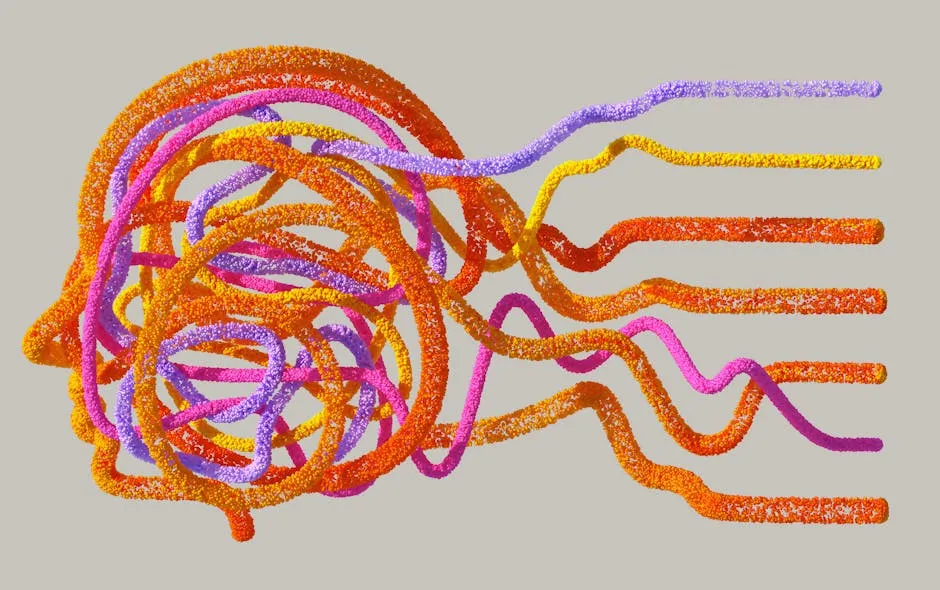Introduction
Lurking variables are the sneaky ninjas of the statistical world. They lurk in the shadows, unnoticed, yet have the power to distort relationships between variables. Imagine conducting research only to find out that an unseen variable has been meddling with your results. A lurking variable is an unmeasured factor that influences both the independent and dependent variables in a study. They often go unaccounted for, leading to misleading conclusions that can skew the entire analysis.
Understanding lurking variables is crucial for accurate data interpretation. Why? Because they can create false correlations, mask real relationships, or even flip the perceived direction of a connection. For instance, consider the classic example of ice cream sales and shark attacks. Both tend to rise in warmer weather, but it’s not the ice cream that attracts sharks! The lurking variable here is temperature, which affects both phenomena. Without recognizing this, one might mistakenly believe there’s a causal relationship between ice cream consumption and shark attacks.
This article aims to shed light on lurking variables, their implications, and best practices for identifying and managing them. We’ll discuss definitions, provide real-world examples, and explain how ignoring lurking variables can lead to poor decision-making in research. By the end, you’ll be armed with knowledge to tackle lurking variables head-on, turning you into a savvy statistician ready to conquer the world of data analysis.

Speaking of data analysis, if you’re looking to deepen your understanding, grab a copy of Regression Analysis: A Comprehensive Guide. It’s a must-have for anyone serious about statistical methods.
So, buckle up! We’re about to embark on an enlightening journey through the murky waters of lurking variable statistics. Whether you’re a seasoned researcher or a curious newbie, you’ll find valuable insights to help you navigate through statistical analyses with ease and confidence. Let’s uncover the secrets that lurking variables hold and ensure that your research shines brightly without any hidden shadows.
Understanding Lurking Variables
What is a Lurking Variable?
A lurking variable is like that unexpected plot twist in a movie that leaves you questioning everything. It’s an unmeasured variable that can significantly impact the relationship between the independent and dependent variables. Unlike confounding variables, which are known and included in the analysis, lurking variables remain hidden, often leading to omitted variable bias.
Omitted variable bias occurs when a lurking variable correlates with both the independent and dependent variables but is not included in the statistical model. This bias can distort the analysis, inflating or deflating the perceived relationship between the studied variables. For example, if researchers study the impact of exercise on weight loss without accounting for dietary habits, they may draw misleading conclusions. Diet acts as a lurking variable, potentially skewing the results of the exercise study.
By recognizing and addressing lurking variables, researchers can enhance the accuracy of their findings. It’s essential to identify these hidden culprits to avoid making faulty assumptions based on incomplete data. In the next section, we’ll distinguish between lurking and confounding variables, ensuring you’re equipped to handle both in your research endeavors.
Lurking Variable vs. Confounding Variable
Definitions and Differences
Lurking variables and confounding variables often dance a complicated tango in the realm of statistics. Understanding each term can save researchers from hiccups in their analysis.
A lurking variable is an unseen factor that can influence both the independent and dependent variables in a study. This variable remains unmeasured and often goes unnoticed, leading to misleading conclusions. For instance, consider a study that finds a correlation between ice cream sales and drowning incidents. The lurking variable here is temperature, affecting both phenomena without being included in the analysis.
On the flip side, a confounding variable is a known factor that also influences the relationship between the independent and dependent variables. Unlike lurking variables, confounding variables are included in the analysis but can still distort results if not properly controlled. For example, in examining the link between exercise and heart health, age may serve as a confounding variable. If age isn’t accounted for, it might give a false impression of the influence of exercise on heart health.
In short, while lurking variables lurk unnoticed, confounding variables are acknowledged but may not be adequately controlled. Recognizing the difference is key to crafting precise statistical analyses.
Examples of Each
To illustrate these concepts further, let’s look at a couple of examples:
- Lurking Variable Example: Imagine researchers are studying the relationship between coffee consumption and heart disease. They might find a positive correlation, but what if it turns out that smoking, a lurking variable, is driving both factors? Those who drink more coffee are also more likely to smoke, thus muddying the waters.
- Confounding Variable Example: In a study linking education to income, the researchers find a positive relationship. However, if they fail to consider work experience as a confounding variable, they might mistakenly conclude that education alone drives income, ignoring the role of experience.
Understanding these distinctions helps researchers avoid misleading conclusions and ensures a more nuanced interpretation of their data.

Examples of Lurking Variables
Real-World Illustrations
Coffee and Heart Disease
Research has often pointed to a correlation between coffee consumption and heart disease. But hold your horses! When digging deeper, researchers discovered that smoking was the real culprit lurking in the background. Coffee drinkers often smoke more, which is a known risk factor for heart disease. In this case, smoking acts as a lurking variable, skewing the apparent relationship between coffee and heart disease.
Education and Income
Next up, let’s talk about education and income. A study might reveal that individuals with higher education levels earn more money. Sounds reasonable, right? But what if work experience sneaks in as a lurking variable? Those with advanced degrees often have more work experience, which also contributes to higher income. Ignoring this lurking variable could lead to faulty conclusions about the link between education and income.
Activity Level and Bone Density
In a fascinating study exploring activity levels and bone density, researchers initially found no correlation. However, they later realized that weight was the lurking variable at play. Individuals who were more active tended to weigh less, and lower-weight individuals often have lower bone density. By including weight in their analysis, researchers uncovered a genuine positive relationship between activity levels and bone density that had previously been obscured.
These examples highlight the importance of recognizing lurking variables in research. They can significantly impact the outcomes of studies, leading to misleading interpretations if not properly accounted for. By understanding these hidden influences, researchers can more accurately interpret their data and draw valid conclusions.

Additional Examples
– Shark Attacks and Ice Cream Sales: Ever wondered why shark attacks spike during summer? It’s not because sharks developed a taste for ice cream! The real culprit is temperature, a lurking variable that affects both ice cream sales and beachgoers. As temperatures rise, more people buy ice cream and flock to the beach, inadvertently increasing their chances of encountering sharks. So, next time you hear about a spike in shark attacks, remember: it’s just the heat!
– Traffic Accidents and Popcorn Consumption: Here’s a head-scratcher: why do traffic accidents seem to correlate with popcorn consumption? No, popcorn isn’t causing drivers to get into accidents! The lurking variable here is population growth. As cities expand and more people hit the roads, both traffic accidents and popcorn sales increase. It’s a classic case of correlation without causation, showcasing how lurking variables can mislead us into thinking there’s a direct link when there’s none.
Consequences of Ignoring Lurking Variables
Impact on Research Validity
– Biased Results: Ignoring lurking variables can lead to biased results that twist the truth like a pretzel. When researchers overlook these hidden influencers, they risk drawing misleading conclusions. For instance, if a study examines the relationship between exercise and weight loss without accounting for dietary habits, the findings may falsely suggest that exercise alone drives weight loss. This can mislead individuals trying to improve their health, as they might ignore the crucial role of nutrition.
– Phantom Correlations: Ever heard of the saying “correlation does not imply causation”? When lurking variables are ignored, researchers can stumble upon phantom correlations—spurious relationships that appear significant but are entirely misleading. For example, studies have shown a correlation between the number of people who drown in swimming pools and the number of films Nicolas Cage appears in. Sounds absurd, right? But without examining lurking variables, one could mistakenly believe that Cage’s film appearances somehow put lives at risk. In reality, both are influenced by unrelated factors like trends in entertainment and summer swimming activity.
By neglecting lurking variables, researchers can inadvertently create a statistical landscape filled with false associations. These misleading results not only jeopardize the validity of research but also impact decision-making in fields ranging from public health to marketing.
In the world of research, being aware of lurking variables is not just a best practice—it’s essential for producing credible and reliable results. Ignoring them opens the door to a slew of misunderstandings, biases, and incorrect conclusions that can ripple outwards, affecting everything from policy decisions to individual behaviors. Researchers must be diligent in identifying and controlling for these unseen forces to ensure the integrity of their findings and the trust of their audience.
Importance of Identifying Lurking Variables
Internal Validity
Lurking variables can play the role of the villain in the story of research findings. They sneak in, unnoticed, and threaten the internal validity of studies. Internal validity refers to how well a study can establish a cause-and-effect relationship. When lurking variables are present, they can mask true relationships or create misleading correlations. It’s like trying to solve a mystery with a crucial piece of evidence missing.
Imagine you’re testing a new diet plan. If you don’t account for participants’ exercise levels, you might mistakenly attribute weight loss solely to the diet. In reality, those who lost weight could have been hitting the gym regularly. This oversight weakens the internal validity of your conclusions.
To ensure robust findings, researchers must identify and control for lurking variables. Without doing so, the integrity of the research is at stake. It’s not just about finding a relationship; it’s about understanding the nuances that drive those relationships. By addressing lurking variables, researchers can confidently present their results, knowing they reflect genuine connections rather than mere coincidences.

Strategies for Identifying and Controlling Lurking Variables
Best Practices for Researchers
Study Design
Crafting a well-thought-out study design is the first line of defense against lurking variables. Think of it as building a fortress for your research. Start by conducting thorough literature reviews. This helps identify potential lurking variables relevant to your study. Consult with experts in the field, as they may highlight factors you hadn’t considered.
Randomization is another valuable tactic. By randomly assigning participants to different groups, you can help distribute lurking variables evenly. This minimizes their potential influence on the outcomes. When everyone is randomly placed, lurking variables become less likely to skew results.
Consider pilot studies as well. They allow researchers to test their methodologies and identify unforeseen lurking variables before the main study. This proactive approach can save a lot of trouble down the line.

Statistical Techniques
When it comes to statistical analysis, several techniques can help mitigate the effects of lurking variables. Regression analysis is one of the most effective tools in this arsenal. By examining the residuals from regression models, researchers can spot patterns that suggest lurking variables are at play. If residuals show a non-random pattern, it’s a red flag. It indicates that an unaccounted variable might be influencing the results.
Additionally, multivariate analysis can be employed. This technique allows researchers to examine multiple variables simultaneously, helping to control for lurking variables. By including potential lurking variables in the model, researchers can better isolate the effects of the primary independent variable.
Tools and Techniques
Using Regression Analysis
Regression analysis is like a magnifying glass for researchers. It helps reveal the hidden influences of lurking variables. By analyzing residuals, researchers can identify patterns that might indicate lurking variables’ effects. If the residuals show a non-random scatter, it’s time to dig deeper. This might suggest a lurking variable is influencing the relationship being studied.
For instance, if a study on exercise and heart health shows residuals clustering in a particular way, it could mean that factors like diet or stress levels are unaccounted for. Identifying these patterns enables researchers to refine their models for more accurate results.
Domain Expertise
Another valuable asset is domain expertise. Researchers should leverage industry-specific knowledge to identify potential lurking variables. Experts in the field can shed light on factors that may not be immediately obvious. For example, in a study on education and income, an education expert might suggest considering parental education levels as a lurking variable.
This expertise can provide insights that enhance the study’s design and analysis. Collaborating with experts ensures that researchers consider all relevant factors, minimizing the risk of lurking variables skewing results.
In summary, identifying and controlling for lurking variables is a multi-faceted process. By employing meticulous study design, utilizing appropriate statistical techniques, and tapping into domain expertise, researchers can bolster the internal validity of their findings. This diligence leads to more reliable outcomes and contributes to the overall integrity of research in any field.
Ethical Considerations and Transparency in Research
Responsible Research Practices
Acknowledging Limitations
Transparency is the name of the game in research. When lurking variables come into play, researchers must acknowledge their limitations. Ignoring lurking variables is like trying to bake a cake without measuring ingredients—chaos ensues! Omitting these hidden factors can lead to skewed results and tainted conclusions. It’s not just about presenting data; it’s about presenting it honestly.
Researchers should clearly state any lurking variables that could influence their findings in their reports. This practice not only boosts credibility but also fosters trust among readers. Imagine telling a friend about your new diet while conveniently forgetting to mention your secret late-night pizza binges. Misleading, right? In research, the stakes are higher. Acknowledging lurking variables paves the way for more accurate interpretations and encourages others to think critically about the results.

Interdisciplinary Collaboration
Two heads are better than one, especially in research! Collaborating across fields can illuminate lurking variables that might otherwise go unnoticed. For example, a health researcher might team up with a sociologist to explore how socioeconomic status affects health outcomes. This partnership can unearth lurking variables like stress levels or access to healthcare, enhancing the quality of the research.
Interdisciplinary collaboration also encourages diverse perspectives. Different fields have unique methodologies and ways of thinking about problems. By bringing these together, researchers can create a more comprehensive understanding of the variables at play. It’s like assembling a superhero team to tackle the complex issues of lurking variables—each member brings a special power to the table!
In summary, responsible research practices hinge on transparency and collaboration. Researchers must acknowledge lurking variables and work together across disciplines to enhance their understanding. This approach not only strengthens research validity but also fosters a culture of integrity and accountability.
Conclusion
In summary, recognizing and addressing lurking variables in statistical analysis is crucial. These hidden influences can distort relationships and lead to misleading conclusions. By acknowledging lurking variables, researchers can improve the accuracy of their findings and enhance the credibility of their work.
It’s essential for researchers and analysts to adopt best practices consistently. Implementing rigorous study designs and statistical techniques can help control for lurking variables. Moreover, fostering interdisciplinary collaborations can open new avenues for understanding these elusive factors.
So, let’s take action! Researchers and analysts should remain vigilant in their studies, always on the lookout for lurking variables. Embrace transparency, encourage collaboration, and commit to the highest standards of research integrity. By doing so, we can ensure our findings contribute positively to knowledge and decision-making.
FAQs
For those interested in the latest advancements in statistical analysis, understanding the emerging trends in statistical analysis of identically distributed data can be quite beneficial. emerging trends in statistical analysis
By the way, if you’re looking to spice up your kitchen, check out this Ice Cream Maker Machine. Because who doesn’t want to make their own ice cream while pondering the mysteries of lurking variables?
Please let us know what you think about our content by leaving a comment down below!
Thank you for reading till here 🙂
All images from Pexels




